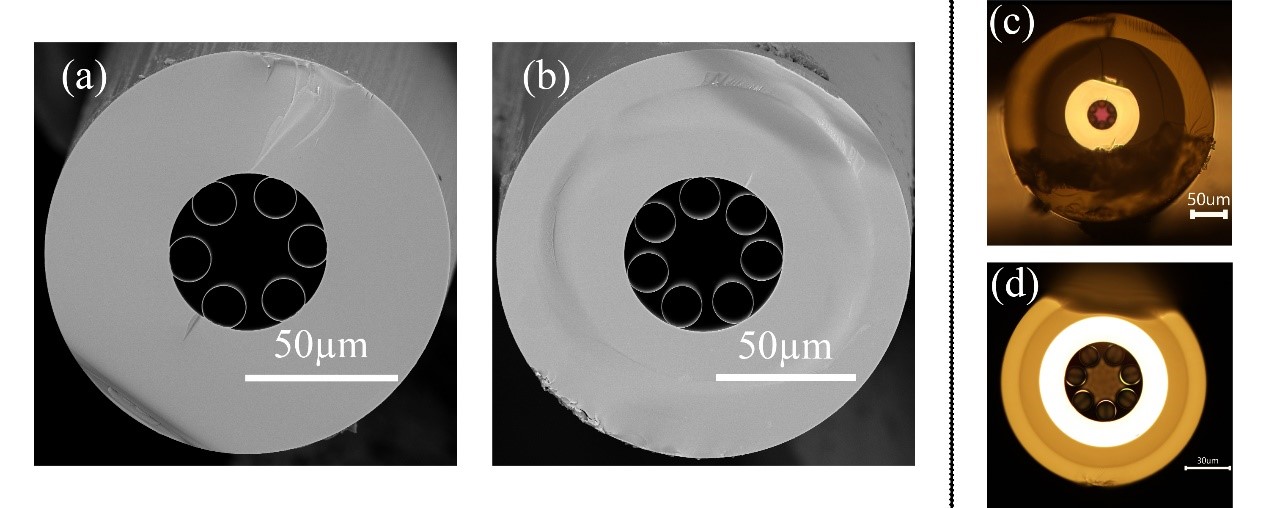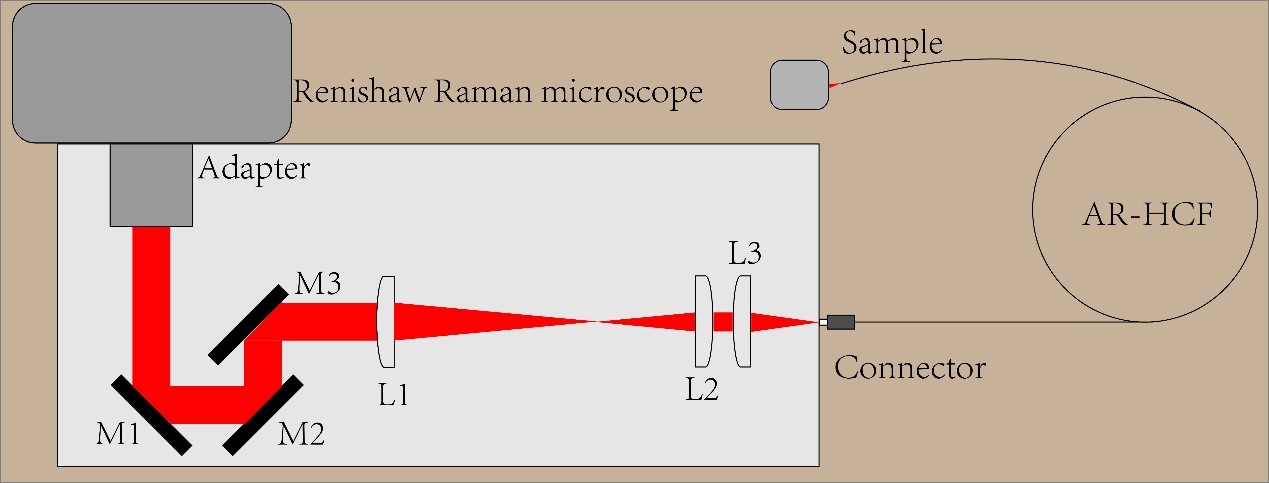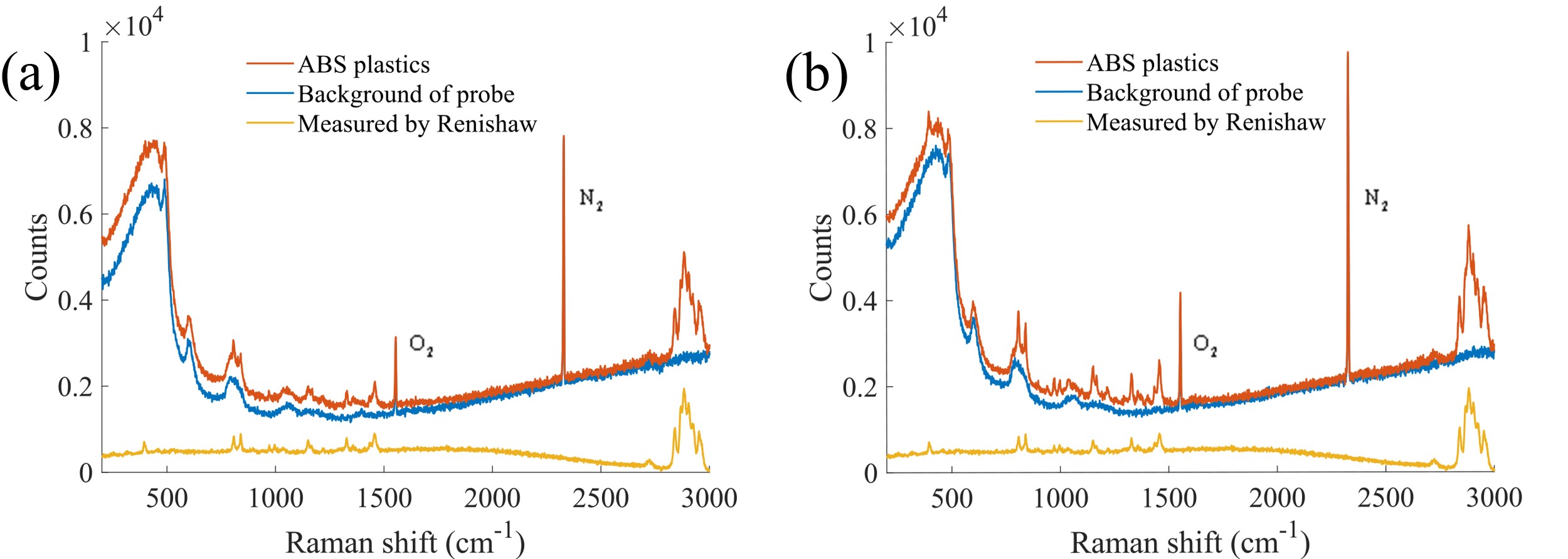
Research Progress on Low Background Noise Raman Probe Using Anti-resonant Hollow-core Fibers
Recently, the research team of Key Laboratory of Materials for High Power Laser of Shanghai Institute of Optics and Fine Mechanics, Chinese Academy of Sciences has made new progress in the research of in-situ detection of Raman signals. They used two types of self-designed and fabricated double-cladding anti-resonant hollow-core fibers (AR-HCFs) and external optical module to expand the function of in-situ detection for the commercial Renishaw Invia Raman confocal microscope in the laboratory. The relevant research results are entitled " In-situ background-free Raman probe using double-cladding anti-resonant hollow-core fibers " published in Biomedical Optics Express.
Traditional silica solid-core fiber is an ideal medium for optical signals because of its low loss and wide transmission window, so it is widely used in Raman detection probes. In the application of such fiber Raman probes, although they can get rid of the limitations of the shape, size and position of the sample, the silica glass material itself will produce a very strong background noise signal after interacting with the pump laser, which often covers the Raman spectral information of the sample we are interested in. In past research reports, the mainstream solution is to use multi-fiber probe design, using different fibers to conduct excitation light and collect signal light. However, this scheme requires the addition of optical elements such as filters at the distal end of the fiber, which will not only reduce the efficiency of signal collection but also increase the size of the probe.
In this work, two types of double-cladding AR-HCFs were designed and fabricated using the traditional stack-and-draw method, as shown in Fig. 1. They can confine the laser mainly in the hollow core for conduction, so that the overlap of the light field and the silica material of the fiber is reduced, which can greatly suppress the silica background noise. After testing, the two types of fiber probes can achieve silica background noise suppression by about two orders of magnitude compared with traditional solid-core silica fiber. Both AR-HCFs are specially designed to have low loss in the visible and near infrared bands, and to have a large numerical aperture (NA) cladding (NA of the cladding is greater than 0.2, about ten times that of the core). The feature of this work is that only one fiber is used as the probe for Raman detection, and it can be used in combination with the commercial Renishaw Invia Raman confocal microscope, as shown in Fig. 2. The external optical path module is connected to the original objective interface of the spectrometer, which can couple the internal excitation light to AR-HCFs, and send the Raman signal collected by the fiber probe back to the spectrometer for analysis. The feasibility of the scheme was verified by the measurement of some solid and liquid samples with the probe (for example, in-situ detection of ABS plastics, the specific results are shown in Figure 3), which is expected to have a broader application prospect in environmental monitoring, biomedical and other fields.
Article website: https://opg.optica.org/boe/fulltext.cfm?uri=boe-15-3-1709&id=546992

Fig.1 (a) and (b) show the SEM images of the two types of double-cladding AR-HCFs. The AR-HCF in (a) is coated with a low-index acrylic coating, and one in (b) has a fluorine doped silica tube outside a pure silica cladding. (c) and (d) are optical microscopy images of AR-HCFs in (a) and (b) respectively, when the Koehler illumination is applied.

Fig.2 Raman sensing scheme optical path diagram.

Fig.3 (a) and (b) show the Raman spectrum results of ABS plastics measured by two types of AR-HCFs respectively. The orange curve is obtained by measuring the sample with the probe, the blue curve is the background signal of the probe itself, and the yellow curve is the spectrum obtained by directly measuring the sample with the Renishaw Invia Raman confocal microscope.